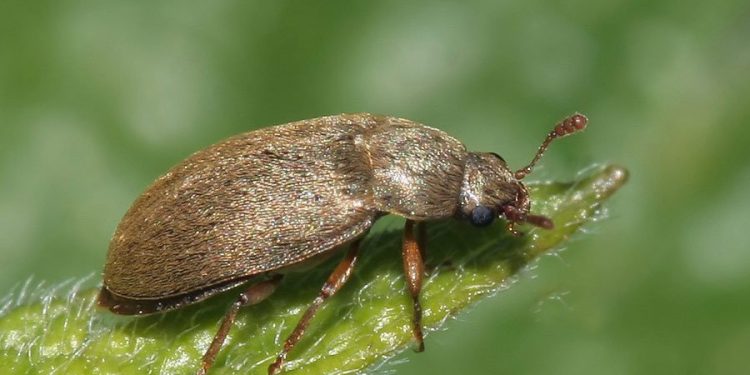#agriculturalpests #cropinfestation #potatofarming #integratedpestmanagement #foodsecurity.
Ernobius mollis, commonly known as the potato stalk weevil, is a significant pest that affects the growth and yield of potato plants. This small beetle has a brownish-grey color and can grow up to 3mm long. Its larvae feed on the stems of potato plants, causing them to wilt and eventually die. This article will provide an overview of the potato stalk weevil, its development, and the consequences of its infestation on agriculture.
The potato stalk weevil undergoes complete metamorphosis, starting as an egg, progressing to the larval stage, and ending up as an adult beetle. The adult weevil emerges from the soil in early spring and feeds on the leaves and stems of the potato plant. After mating, the female weevil lays her eggs on the potato plant stem, and the larvae hatch from these eggs and burrow into the stem, where they feed and grow.
The infestation of potato stalk weevils can result in a significant reduction in potato yield, as the larvae can cause the stems to break and the plant to wilt. In addition, the weevils can transmit bacterial diseases, further impacting the health and productivity of potato plants. The damage caused by potato stalk weevils can also affect the quality of potato crops, making them unsuitable for consumption or sale.
To control the infestation of potato stalk weevils, farmers can use a combination of cultural, chemical, and biological control methods. Cultural methods include crop rotation and the removal of crop debris after harvest, while chemical control involves the use of insecticides. Biological control methods include the use of predators and parasitoids to target the weevil’s larvae and eggs.
In conclusion, the potato stalk weevil is a significant pest that can cause extensive damage to potato plants, resulting in reduced yield and quality. Farmers and researchers must continue to develop and improve methods to control the infestation of this pest to protect potato crops and ensure food security.








